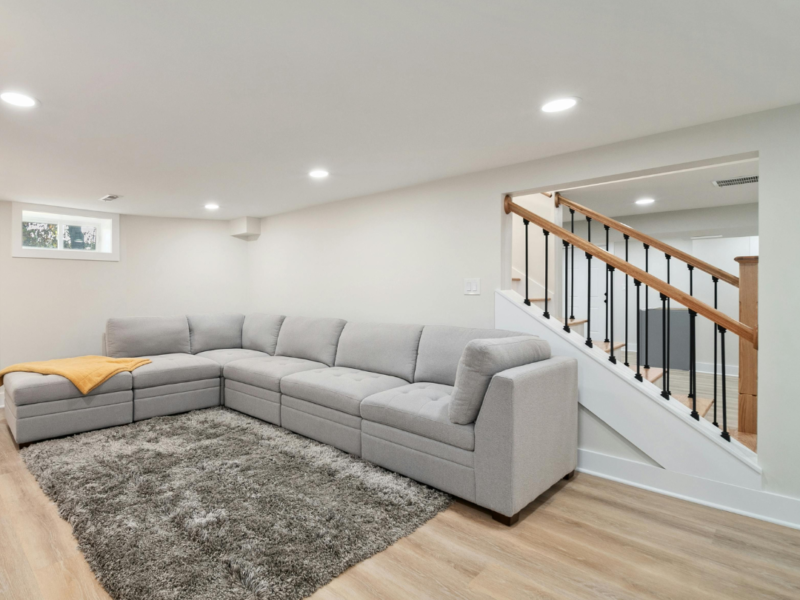Planning a home renovation project can seem daunting, but with the right approach, it can become an exciting opportunity to enhance living spaces. Successful renovations begin with a clear plan that outlines goals, budgets, and timelines. By taking the time to research and organize, homeowners can avoid common pitfalls that lead to frustration and overspending.
Establishing a well-defined vision helps guide decisions throughout the renovation process. From selecting materials to hiring contractors, knowing what one wants can streamline choices and reduce uncertainty. Setting a realistic budget is crucial; it helps to account for unexpected expenses that may arise during the project. But if someone needs assistance with these daunting aspects of home remodeling, it may benefit them to learn more about professionals who can streamline the renovation process, all while keeping in mind the homeowner’s vision and budget.
Communication is key during renovations, whether with contractors or family members. Clear discussions about expectations, timelines, and any changes will help keep the project on track. Engaging in regular check-ins ensures that everyone is aligned and that the renovation meets the homeowner’s vision.
Developing a Renovation Plan
Creating a solid renovation plan is essential for a successful home improvement project. Two key components involve assessing the home renovation needs and setting realistic goals to guide the process.
Assessing Home Renovation Needs
To begin, a thorough assessment of the home is crucial. This involves identifying areas requiring attention. Key considerations include:
- Condition of existing structures: Look for signs of wear, such as cracks, leaks, or outdated materials.
- Functionality: Evaluate whether spaces meet current needs. For instance, a kitchen might require a layout change for better flow.
- Energy efficiency: Consider upgrades that could enhance energy performance, leading to long-term savings.
Taking detailed notes and consulting professionals where necessary can aid in determining the scope of renovations. Prioritize needs based on urgency, functionality, and potential return on investment.
Setting Realistic Goals
After understanding renovation needs, the next step is defining goals. This should encompass:
- Budget constraints: Establish a clear budget that includes all expected costs, such as labor, materials, and contingencies.
- Timeline: Set a realistic timeline for the project to minimize disruption. Understand that delays may occur, especially in larger renovations like kitchen or bathroom remodels.
- Personal objectives: Define what is important, whether it’s updating aesthetics, improving energy efficiency, or increasing property value.
Setting achievable goals helps maintain focus throughout the renovation. Regularly revisiting these goals during the project can ensure alignment with the original vision.
Budgeting and Financial Planning
Budgeting and financial planning are crucial steps in a home renovation project. Establishing a solid budget helps in managing expectations and ensuring that funds are available throughout the project.
Calculating Renovation Costs
To accurately calculate renovation costs, start by identifying all aspects of the project. This includes materials, labor, permits, and any additional fees.
A typical breakdown might look like this:
| Category | Percentage of Total Budget |
| Materials | 40% |
| Labor | 30% |
| Permits | 10% |
| Contingency | 10% |
| Miscellaneous | 10% |
It’s essential to obtain multiple cost estimates from contractors and suppliers. This allows for better comparison and informed decisions, helping to identify potential cost overruns early in the process.
Exploring Financing Options
Homeowners have various financing options to consider for renovation projects. One common method is using a home equity line of credit (HELOC), which allows access to funds based on home equity.
Other options include:
- Personal loans: Unsecured loans that can fund smaller projects.
- FHA 203(k) loans: Specifically for home renovations, these loans integrate the costs into the mortgage.
Each option has unique terms and interest rates, making it vital to evaluate the long-term financial impact. Consulting with a financial advisor can aid in choosing the best option.
Preparing for Cost Overruns
Cost overruns can occur in any renovation project, making preparation necessary. A common recommendation is to include a contingency fund of at least 10-20% of the total budget to cover unexpected expenses.
Homeowners should also review any penalty clauses in contracts that may apply should the project exceed the budget or timeline. Anticipating these costs and understanding the potential impact on the overall renovation budget allows for better financial management and a smoother project flow.
Organizing the Renovation Process
Effective organization is critical for a successful home renovation. Key aspects include hiring reliable contractors, navigating permitting and regulations, and establishing a clear timeline.
Hiring Reliable Contractors
Selecting the right contractor can make or break a renovation project. It is essential to verify credentials and look for licenses specific to plumbing, electrical work, and general contracting. Gathering recommendations from friends or online reviews can provide insights into a contractor’s reliability.
Check for the following:
- Insurance: Ensure they have liability and workers’ compensation insurance.
- Experience: Choose someone with experience relevant to your specific renovation.
- Communication: Establish clear communication channels to avoid misunderstandings during the project.
A well-chosen contractor will help manage project phases effectively.
Navigating Permitting and Regulations
Understanding the permitting process is crucial before starting renovations. Different types of projects often require specific permits, particularly for structural changes or plumbing modifications.
Steps to consider:
- Research Building Codes: Familiarize yourself with local regulations to ensure compliance.
- Submit Applications: Prepare accurate and detailed applications to avoid delays.
- Schedule Inspections: Plan for necessary inspections at various stages to maintain compliance.
Being diligent about permits helps prevent complications that could delay the project.
Establishing a Timeline and Phases
A clear renovation timeline provides structure and helps in tracking progress. Start by breaking the project into phases, allowing teams to focus on specific tasks like demolition, plumbing, or electrical work.
Key elements of a timeline:
- Completion Date: Set realistic goals based on contractor estimates and material availability.
- Adjust for Material Shortages: Anticipate potential delays due to shortages in materials and include extra time in the schedule.
- Regular Check-ins: Schedule weekly updates to assess progress and adjust as needed.
Effective planning and communication will keep the renovation on track and within budget.
Managing a Successful Renovation
A successful home renovation requires attention to critical aspects such as ensuring structural integrity, maintaining communication, and reviewing completed work. Addressing these elements effectively can lead to a seamless renovation experience.
Ensuring Structural Integrity
Before any renovation project, assessing and ensuring structural integrity is vital. This includes checking the foundation, load-bearing walls, and roof. Engaging a structural engineer can provide valuable insights, especially during significant remodels like a kitchen renovation or when making structural changes.
Key considerations include:
- Foundation Inspection: Look for cracks and water damage.
- Load-Bearing Wall Evaluation: Identify walls that support the structure.
- Roof Condition Check: Assess for leaks, damages, or aging materials.
These steps prevent costly issues later in the project and ensure safety.
Monitoring Progress and Communication
Effective communication is essential throughout the renovation process. Regularly updating the project team can help keep timelines on track and address issues promptly. Schedule weekly check-ins to discuss progress and adjust the plan as needed.
Implementing a communication plan can include:
- Daily Log: Document daily progress and concerns.
- Designated Point of Contact: Assign a person for communication to streamline information flow.
- Visuals & Updates: Share photos of progress with stakeholders to keep everyone informed.
This consistent engagement fosters collaboration and can lead to a successful project outcome.
Finalizing and Reviewing the Completed Project
After finishing the renovation, a thorough review ensures that all aspects meet the initial vision and quality standards. Inspecting the work helps to identify any defects or outstanding issues that need resolution.
Steps to follow include:
- Walkthrough Inspection: Conduct a detailed inspection with the contractor.
- Check for Compliance: Ensure all work meets local building codes.
- List Remaining Tasks: Document any incomplete work for clarity.
Addressing these final details helps transform the renovation into a polished home improvement project.



